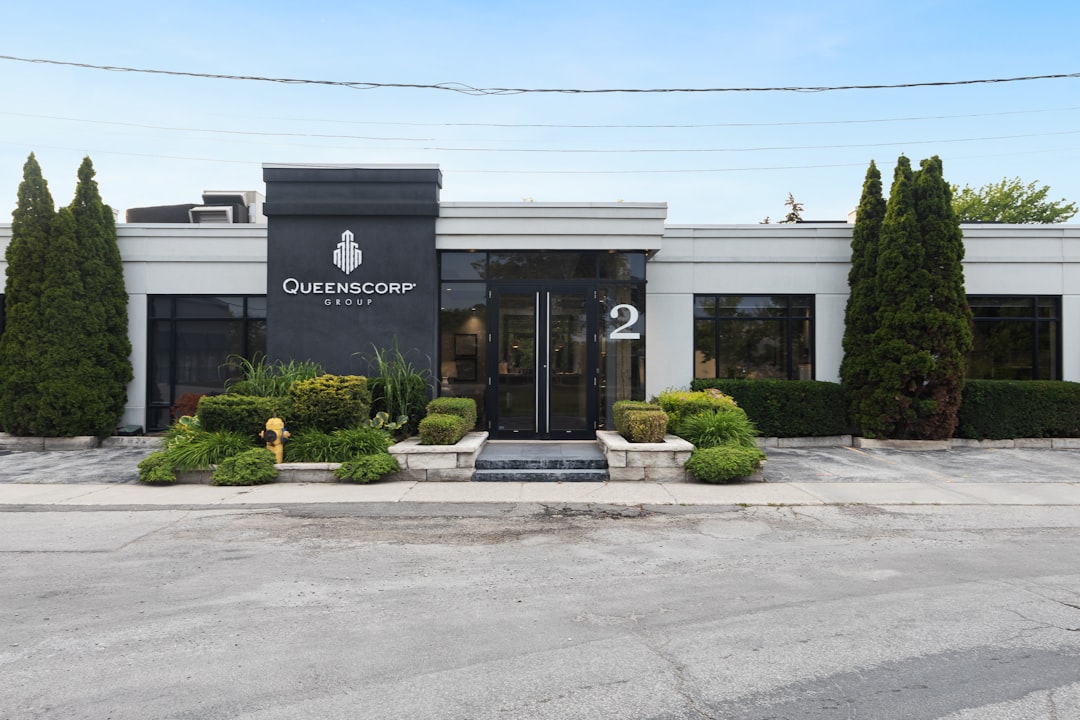The New York City commercial real estate market is a dynamic and multifaceted landscape that attracts investors from around the globe. With its towering skyscrapers, bustling streets, and vibrant neighborhoods, NYC offers a unique blend of opportunities and challenges for those looking to invest in commercial properties. The market is characterized by its high demand and limited supply, which often leads to competitive bidding and soaring prices.
Investors must be well-versed in the nuances of the market, including trends in leasing, property values, and economic indicators that can influence investment decisions. In recent years, the NYC commercial real estate market has shown resilience despite economic fluctuations. Factors such as job growth, population increases, and a steady influx of businesses contribute to the ongoing demand for commercial spaces.
However, potential investors must also consider external influences such as interest rates, government policies, and global economic conditions that can impact the market’s stability. Understanding these elements is crucial for making informed investment choices and navigating the complexities of this vibrant market.
Key Takeaways
- Understanding the NYC Commercial Real Estate Market:
- NYC commercial real estate market is dynamic and influenced by various factors such as economic trends, demographics, and industry shifts.
- Identifying Key Neighborhoods for Investment:
- Identifying key neighborhoods for investment requires thorough research on factors such as accessibility, infrastructure, and potential for growth.
- Navigating Zoning and Building Regulations:
- Navigating zoning and building regulations in NYC requires a deep understanding of local laws and regulations, as well as building codes and permits.
- Leveraging Public Transportation and Infrastructure:
- Leveraging public transportation and infrastructure is crucial for commercial real estate success in NYC, as it impacts accessibility and property value.
- Capitalizing on the Tech and Startup Boom:
- The tech and startup boom in NYC presents opportunities for commercial real estate investment, especially in areas with a strong tech presence.
Identifying Key Neighborhoods for Investment
Identifying the right neighborhoods for investment is a critical step in capitalizing on the NYC commercial real estate market. Areas such as Manhattan, Brooklyn, and Queens have emerged as hotspots for commercial activity, each offering unique characteristics that appeal to different types of investors. Manhattan remains a prime location due to its status as a global financial hub, attracting businesses and professionals from various sectors.
The demand for office spaces, retail outlets, and hospitality venues continues to thrive in this iconic borough. On the other hand, Brooklyn has experienced a renaissance in recent years, with neighborhoods like Williamsburg and DUMBO becoming increasingly desirable for both residential and commercial investments. The influx of creative industries and tech startups has transformed these areas into vibrant communities that attract young professionals and families alike.
Queens, with its diverse population and growing economy, presents opportunities for investors looking to tap into emerging markets. By carefully analyzing these neighborhoods and their potential for growth, investors can make strategic decisions that align with their investment goals.
Navigating Zoning and Building Regulations

Navigating the complex web of zoning and building regulations is essential for anyone looking to invest in NYC commercial real estate. The city’s zoning laws dictate how land can be used, influencing everything from building height to the types of businesses that can operate in specific areas. Investors must familiarize themselves with these regulations to ensure compliance and avoid costly setbacks during the development process.
Understanding zoning classifications—such as residential, commercial, and mixed-use—can help investors identify suitable properties that align with their vision. Moreover, building regulations in NYC are stringent and often require extensive documentation and approvals before construction can begin. Investors must engage with city agencies, architects, and legal experts to navigate this intricate process effectively.
Failure to adhere to these regulations can result in delays or even legal challenges that could jeopardize an investment. By proactively addressing zoning and building requirements, investors can streamline their projects and enhance their chances of success in the competitive NYC market.
Leveraging Public Transportation and Infrastructure
| Metrics | Data |
|---|---|
| Public Transportation Ridership | 10 million passengers per month |
| Infrastructure Investment | 1 billion allocated for public transportation projects |
| Carbon Emissions Reduction | 20% decrease in CO2 emissions due to increased public transportation usage |
| Job Creation | 5,000 new jobs created in the public transportation sector |
Public transportation and infrastructure play a pivotal role in shaping the desirability of commercial real estate in New York City. The city’s extensive subway system, bus routes, and commuter trains provide unparalleled access to various neighborhoods, making them attractive to businesses and consumers alike. Investors who prioritize properties near major transit hubs often find themselves at an advantage, as these locations tend to experience higher foot traffic and demand.
Additionally, ongoing infrastructure projects—such as the expansion of transit lines or improvements to public spaces—can significantly enhance property values over time. Investors should stay informed about planned developments in transportation and infrastructure that could impact their investments. By strategically selecting properties situated near transit options or upcoming infrastructure projects, investors can position themselves for long-term growth and capitalize on the evolving landscape of NYC’s commercial real estate market.
Capitalizing on the Tech and Startup Boom
The tech and startup boom has transformed New York City into a thriving hub for innovation and entrepreneurship. As more tech companies establish their presence in the city, the demand for commercial spaces tailored to their needs has surged. Investors have an opportunity to capitalize on this trend by targeting properties that cater specifically to tech firms, co-working spaces, or incubators that support startups.
Areas such as Silicon Alley—encompassing neighborhoods like Flatiron District and Chelsea—have become synonymous with tech innovation. These locations attract a diverse range of businesses seeking modern office spaces equipped with cutting-edge amenities. By investing in properties within these burgeoning tech districts, investors can tap into a growing market that shows no signs of slowing down.
Furthermore, fostering partnerships with local tech organizations or participating in startup events can provide valuable insights into emerging trends and opportunities within this vibrant sector.
Adapting to Changing Consumer Behavior and Retail Trends

The retail landscape in New York City is undergoing significant changes as consumer behavior evolves in response to technological advancements and shifting preferences.
Investors must stay attuned to these trends to identify opportunities within the retail sector.
For instance, properties that offer flexible spaces for pop-up shops or experiential events are becoming increasingly popular among retailers looking to create memorable experiences for consumers. Additionally, integrating technology into retail spaces—such as interactive displays or mobile payment options—can enhance customer engagement and drive sales. By understanding these changing dynamics and investing in properties that align with modern retail trends, investors can position themselves for success in a rapidly evolving market.
Evaluating the Impact of Tourism and Hospitality
Tourism plays a vital role in New York City’s economy, significantly influencing the demand for commercial real estate in the hospitality sector. With millions of visitors flocking to the city each year, there is a constant need for hotels, restaurants, and entertainment venues that cater to tourists’ diverse preferences. Investors looking to capitalize on this trend should consider properties located near popular attractions or transportation hubs that facilitate easy access for visitors.
Moreover, the hospitality industry is adapting to changing consumer expectations by emphasizing unique experiences and personalized services. Investors who focus on boutique hotels or innovative dining concepts may find lucrative opportunities within this sector. Additionally, understanding seasonal fluctuations in tourism can help investors make informed decisions about when to enter or exit specific markets within the hospitality landscape.
Exploring Opportunities in Industrial and Warehouse Spaces
As e-commerce continues to reshape consumer behavior, the demand for industrial and warehouse spaces in New York City has surged. The rise of online shopping has necessitated efficient logistics operations, leading companies to seek out strategically located warehouses that facilitate quick distribution to urban centers. Investors who recognize this trend can capitalize on opportunities within the industrial sector by targeting properties that meet the needs of modern supply chains.
Furthermore, adaptive reuse of existing industrial spaces presents an exciting avenue for investment. Many former manufacturing facilities are being transformed into trendy office spaces or mixed-use developments that blend residential living with commercial activity. By identifying properties with potential for adaptive reuse, investors can tap into a growing market while contributing to urban revitalization efforts.
Maximizing Returns through Mixed-Use Developments
Mixed-use developments have gained popularity in New York City as they offer a blend of residential, commercial, and recreational spaces within a single project. This approach not only maximizes land use but also creates vibrant communities that attract diverse demographics. Investors who embrace mixed-use developments can benefit from multiple revenue streams while contributing to urban revitalization efforts.
By integrating residential units with retail spaces or office environments, mixed-use developments foster a sense of community while enhancing property values over time. Additionally, these projects often receive favorable zoning considerations due to their potential positive impact on local neighborhoods. Investors should explore opportunities for mixed-use developments in emerging areas where demand for housing and commercial spaces is on the rise.
Assessing the Impact of Environmental and Sustainability Initiatives
Environmental sustainability has become a critical consideration in the NYC commercial real estate market as both investors and tenants increasingly prioritize eco-friendly practices.
Investors who prioritize sustainability initiatives can enhance their property values while contributing positively to the environment.
Moreover, government incentives for green building practices can further incentivize investors to adopt sustainable measures within their projects. Understanding local regulations regarding sustainability initiatives can provide investors with valuable insights into potential cost savings or tax benefits associated with eco-friendly developments. By aligning investment strategies with sustainability goals, investors can position themselves favorably within a market that increasingly values environmental responsibility.
Overcoming Challenges in NYC Commercial Real Estate
Despite its many opportunities, investing in NYC commercial real estate comes with its share of challenges. High competition among investors often leads to inflated prices, making it difficult for newcomers to enter the market without substantial capital reserves. Additionally, navigating complex regulations and zoning laws can pose significant hurdles for those unfamiliar with the local landscape.
To overcome these challenges, investors should consider partnering with experienced local real estate professionals who possess valuable insights into market trends and regulatory requirements. Building strong relationships within the industry can provide access to off-market deals or insider knowledge about emerging neighborhoods poised for growth. By leveraging expertise and resources effectively, investors can navigate the complexities of NYC’s commercial real estate market while maximizing their chances of success.
In conclusion, understanding the intricacies of the NYC commercial real estate market requires a multifaceted approach that encompasses various factors—from identifying key neighborhoods to navigating regulations and adapting to changing consumer behaviors. By staying informed about emerging trends and leveraging opportunities within sectors such as tech startups or mixed-use developments, investors can position themselves strategically within this dynamic landscape while overcoming challenges along the way.
In recent years, the NYC commercial real estate market has experienced significant fluctuations, influenced by various economic and social factors. A related article that delves into the intricacies of this market can be found on MyGeoQuest. This article provides insights into the current trends, challenges, and opportunities within the NYC commercial real estate sector. For a comprehensive understanding of these dynamics, you can read more by visiting the article on MyGeoQuest.
WATCH THIS! The Real Cost of NYC Living: Your Wallet, Sanity, and Subway Survival Skills
FAQs
What is NYC commercial real estate?
NYC commercial real estate refers to properties in New York City that are used for business purposes, such as office buildings, retail spaces, industrial facilities, and multifamily apartment buildings.
What are the different types of NYC commercial real estate?
The different types of NYC commercial real estate include office buildings, retail spaces, industrial facilities, and multifamily apartment buildings. Each type of property serves a different business purpose and has its own unique characteristics and requirements.
What are the key factors to consider when investing in NYC commercial real estate?
Key factors to consider when investing in NYC commercial real estate include location, market trends, property condition, tenant quality, lease terms, and potential for future growth and development. It is important to conduct thorough due diligence and work with experienced professionals to make informed investment decisions.
What are the current trends in the NYC commercial real estate market?
Current trends in the NYC commercial real estate market include a shift towards mixed-use developments, increased demand for flexible office spaces, growing interest in industrial properties due to e-commerce growth, and a focus on sustainability and wellness features in commercial buildings.
What are the challenges of owning and managing NYC commercial real estate?
Challenges of owning and managing NYC commercial real estate include high property taxes, stringent regulations, maintenance and operational costs, tenant turnover, and market volatility. It requires careful planning, proactive management, and a deep understanding of the local market dynamics.
